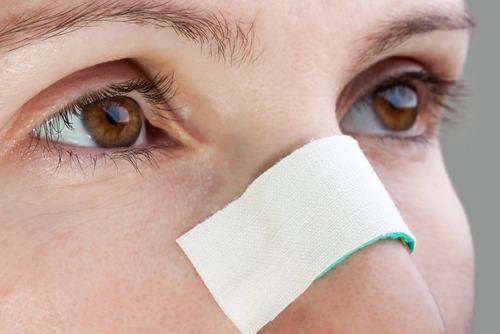Coding E/M-Nosebleed Repair Combos

Question: A 19-year-old established patient reported to our family physician (FP) with a nosebleed that she could not control. The physician examined the patient and found that the bleeding was exclusive to the left nare. He used ice and packing to try and stem the bleeding, but it didn’t work. Then, the physician put a compressed nasal sponge in the left nare, which stopped the bleeding after a few minutes. Is this encounter an E/M service or a procedure?
South Carolina Subscriber
Answer: The encounter is both E/M service and procedure, actually. The visit you describe will allow you to report an E/M and a nosebleed repair code — provided you remember your modifiers.
On the claim, report 30901 (Control nasal hemorrhage, anterior, simple [limited cautery and/or packing] any method) for the repair. Then report the appropriate-level E/M code (99211-99215, Office or other outpatient visit for the evaluation and management of an established patient …), based on encounter notes. Attach modifier 25 (Significant, separately identifiable evaluation and management service by the same physician or other qualified health care professional on the same day of the procedure or other service) to the E/M code to show that the E/M and repair were separate services. You might also need to append site modifier LT (Left side) to 30901 if your payer requires it.
E/M exception: That is not to say that all nosebleed treatments result in a codeable procedure, however. If the physician stops the bleeding with standard methods — such as ice or pressure — then it is an E/M-only service (99201-99215, Office or other outpatient visit …). If your physician stops the bleeding with standard methods, you’ll just roll the work units for the nosebleed fix into the other work the physician performed during the encounter, and then choose the appropriate E/M code and skip the modifier.
When standard methods can’t stop the bleeding, though, you get into the territory of separately codeable procedure. If the notes indicate that the physician had to use more involved methods to stop the bleeding — cautery or packing, for instance — then you should code the E/M and the repair separately using modifier 25.
Why not 30903? Most FP offices are not set up to handle complex nosebleed repairs, so you probably won’t use 30903 (Control nasal hemorrhage, anterior, complex [extensive cautery and/or packing] any method). Complex repairs often involve several attempts to stop the bleeding, and are always marked by very aggressive stoppage tactics, such as a rhinorocket or an epistaxis balloon.
If you think you have a 30903 claim on your hands, be sure to vet it with your physicians and payers before reporting the code.




